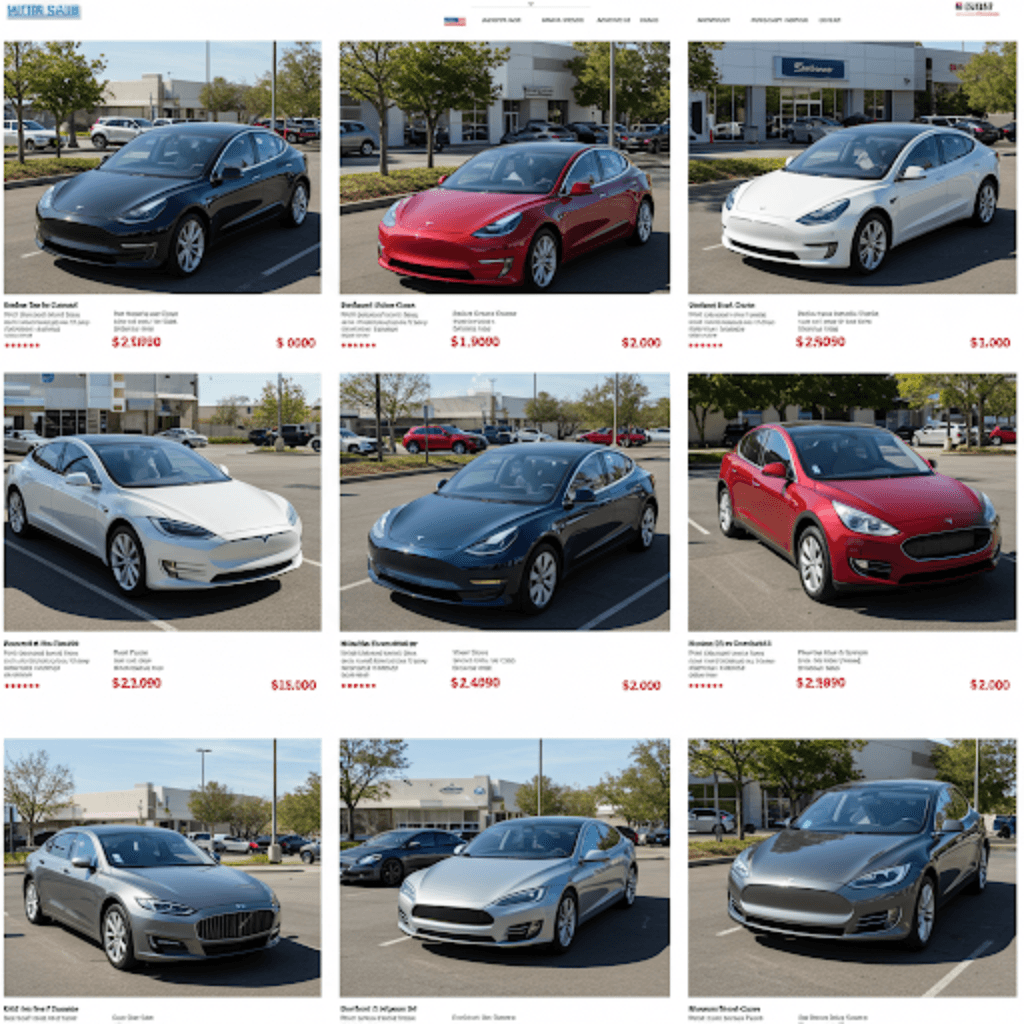
Navigating the electric avenue: Your guide to electric cars for sale in the USA
The automotive landscape is undergoing a dramatic transformation, and at the heart of it lies the rise of electric vehicles (EVs). No longer a futuristic fantasy, electric cars are readily available, offering a compelling blend of environmental responsibility, reduced running costs, and surprisingly exhilarating performance. If you’re considering joining the electric revolution, this comprehensive guide will navigate you through the world of electric cars for sale in the USA.
Why choose an electric car?
The reasons to switch to an electric car extend far beyond simply being eco-conscious. While the environmental benefits are significant, EVs offer a multitude of advantages that make them increasingly attractive to a wide range of drivers.
- Environmental impact: EVs produce zero tailpipe emissions, contributing to cleaner air in our cities and reducing our reliance on fossil fuels. This is a major step towards combating climate change.
- Lower running costs: Electricity is typically cheaper than gasoline, meaning you’ll spend less “fueling” your car. Additionally, EVs have fewer moving parts than internal combustion engine (ICE) vehicles, leading to lower maintenance costs. Say goodbye to oil changes!
- Government incentives: The federal government, and many state governments, offer tax credits and rebates to incentivize EV adoption. These incentives can significantly reduce the purchase price of an electric car.

- Performance: Electric motors deliver instant torque, resulting in impressive acceleration and a surprisingly sporty driving experience. Many EVs offer performance that rivals, or even surpasses, that of traditional gasoline-powered cars.
- Quiet operation: EVs operate much more quietly than ICE vehicles, reducing noise pollution and providing a more serene driving experience.
- Technological advancements: EVs are at the forefront of automotive innovation, often incorporating cutting-edge technology, advanced driver-assistance systems, and sophisticated infotainment systems.
- Growing charging infrastructure:The network of public charging stations is constantly expanding, making it easier than ever to keep your EV charged, even on long journeys.
Understanding the different types of electric cars
The term “electric car” encompasses a few different types of vehicles, each with its own characteristics:
- Battery Electric Vehicles (BEVs): These are fully electric cars, powered solely by a battery pack. They require plugging into an external power source to recharge. Examples include the Tesla Model 3, Chevrolet Bolt EV, and Nissan LEAF.
- Plug-in Hybrid Electric Vehicles (PHEVs): PHEVs combine a battery-powered electric motor with a gasoline engine. They can be plugged in to recharge the battery, but also have the ability to run on gasoline when the battery is depleted. Examples include the Toyota Prius Prime, Chrysler Pacifica Hybrid, and Ford Escape PHEV.
- Hybrid Electric Vehicles (HEVs): Traditional hybrids, combine a gasoline engine with an electric motor, but they cannot be plugged in. The battery is recharged through regenerative braking and the internal combustion engine. While not technically an “electric car”, it’s a bridge to full electrification. Example: Toyota Prius.
- Fuel Cell Electric Vehicles (FCEVs): These vehicles use hydrogen fuel cells to generate electricity, emitting only water vapor. While still a niche market, FCEVs offer long ranges and quick refueling times. Example: Toyota Mirai. This article will focus mainly on BEVs and PHEVs.
Factors to consider when buying an electric car
Choosing the right electric car involves carefully considering your individual needs and preferences. Here are some key factors to keep in mind:
- Range: How far can the car travel on a single charge? Consider your daily commute and typical driving patterns. BEVs generally offer longer ranges than PHEVs.
- Charging time: How long does it take to fully charge the battery? This depends on the battery size, the charging station’s power output (Level 1, Level 2, or DC fast charging), and the car’s onboard charger.
- Price: EVs typically have a higher upfront cost than comparable ICE vehicles, although government incentives can help offset this. Consider the total cost of ownership, including fuel savings and lower maintenance.
- Battery life and warranty: EV batteries are designed to last for many years, and manufacturers typically offer warranties of 8-10 years or 100,000 miles (or more).
- Charging infrastructure: Assess the availability of public charging stations in your area and along your frequent travel routes. Consider installing a Level 2 charger at home for faster and more convenient charging.
- Cargo space and passenger capacity: EVs come in various body styles, from compact hatchbacks to spacious SUVs. Choose a model that meets your needs for passenger and cargo space.
- Technology and features: Consider the level of technology and features that are important to you, such as advanced driver-assistance systems, infotainment systems, and connectivity options.
- Your driving style. Are you a more aggressive driver, or more calm and relaxed? Certain electric cars are more designed for optimal performance and driving experince, while others focus is mainly on range.
Popular electric car models currently available
The EV market is rapidly expanding, with new models being introduced regularly. Here are some of the popular electric cars currently available in the USA (as of late 2023/early 2024, availability may vary):
- Tesla Model 3: A popular and relatively affordable Tesla, offering a good balance of range, performance, and technology.
- Tesla Model Y: A compact SUV based on the Model 3, offering more cargo space and a higher ride height.
- Chevrolet Bolt EV: A practical and affordable hatchback with a respectable range.
- Chevrolet Bolt EUV: A slightly larger and more SUV-like version of the Bolt EV.
- Ford Mustang Mach-E: An all-electric SUV that carries the iconic Mustang name, offering sporty performance and a stylish design.
- Volkswagen ID.4: A compact SUV with a spacious interior and a comfortable ride.
- Hyundai Kona Electric: A subcompact SUV with a long range and a competitive price.
- Kia Niro EV: A versatile crossover with a good range and a spacious interior.
- Nissan LEAF: One of the pioneers of the modern EV era, the LEAF offers a practical and affordable option.
- Rivian R1T: An all-electric pickup truck with impressive off-road capabilities and a luxurious interior.
- Rivian R1S: An all-electric SUV based on the R1T platform.
- Lucid Air: A luxury electric sedan with a long range and impressive performance.
- Polestar 2: A stylish and sporty fastback with a minimalist design.
- Ford F-150 Lightning:The electric version of America’s best-selling pickup truck.
This is not an exhaustive list, and new models are frequently being added. It’s always best to research specific model availability, pricing, and features.
The future of electric cars
The electric car market is poised for continued growth in the coming years. Battery technology is constantly improving, leading to longer ranges and faster charging times. Automakers are investing heavily in EV development, and a wider variety of models will become available, catering to diverse needs and budgets. The charging infrastructure is also expanding rapidly, making it easier than ever to own and operate an EV. Government policies and regulations are further supporting the transition to electric mobility. The future of driving is undoubtedly electric.
Making the switch: Final thoughts
Choosing an electric car is a significant decision, but it’s one that offers numerous benefits for both you and the environment. By carefully considering your needs, researching the available models, and understanding the charging infrastructure, you can confidently navigate the electric avenue and find the perfect EV to fit your lifestyle. The transition to electric driving is not just a trend; it’s a fundamental shift in the automotive industry, and it’s an exciting time to be a part of it.







